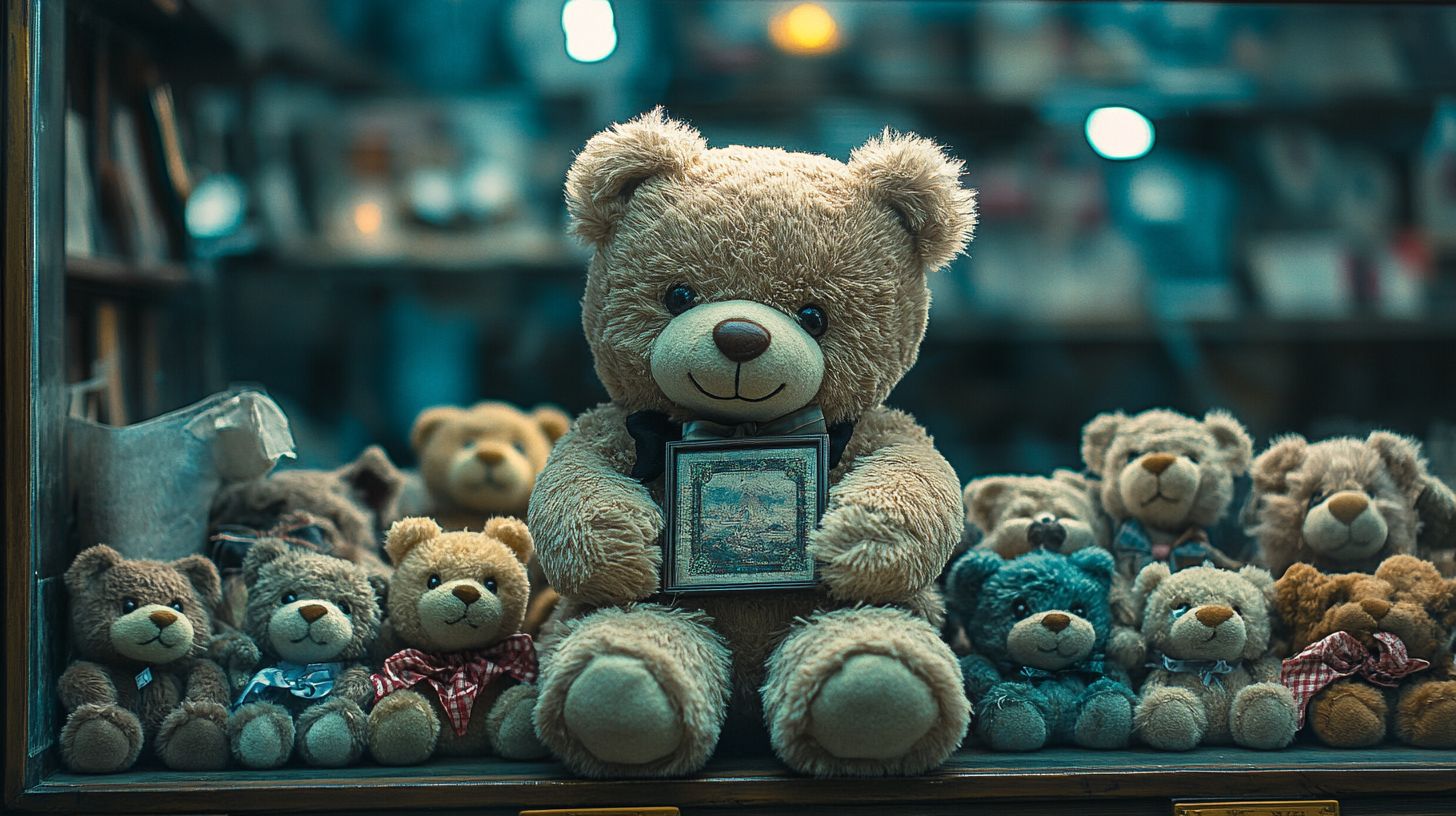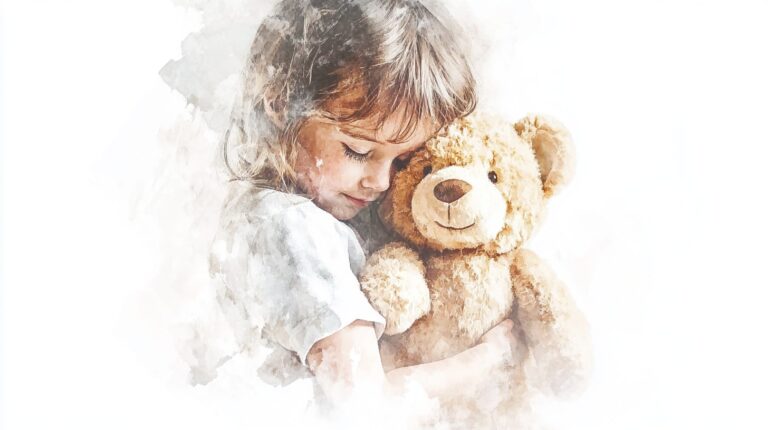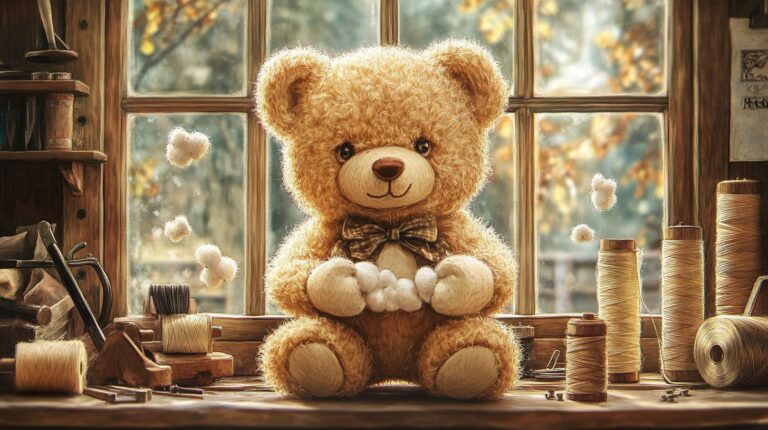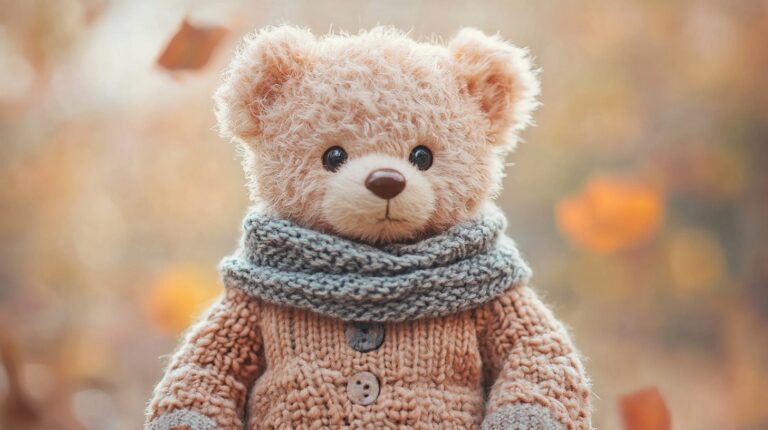Want to know what makes a teddy bear truly special? Age is rather crucial – those lovely pre-1930s bears, particularly from the Edwardian era, often fetch a pretty penny at auction houses across Britain. Mind you, proper materials make all the difference – genuine mohair and original stuffing can transform an ordinary bear into something rather special.
Original labels and documentation are absolute treasures, whilst bears crafted by prestigious makers like Steiff or our own Merrythought typically start around £150. That's quite a jump from the mass-produced sorts you might find in shops for £15-30, but there's good reason for it.
Whilst pristine condition certainly matters, I rather think a bit of honest wear adds character – after all, these bears were meant to be loved. Keep them stored properly at about 18-21°C, though do be mindful that proper collectibles need a touch more care than your average cuddle companion. Some collectors swear by humidity controls, but I've seen lovely old bears that have managed perfectly well without such fuss.
Key Takeaways
One of the most fascinating aspects of teddy bear collecting is how age shapes value – those lovely old bears from before 1930, particularly Edwardian pieces, tend to fetch rather spectacular prices at auction. Mind you, it's not just about age alone.
The materials really do matter enormously. There's something quite special about those mohair bears, especially when they've still got their original stuffing intact. They're in a different league altogether compared to the synthetic ones, though finding them in pristine condition is becoming increasingly rare these days.
Handcrafted bears are particularly cherished, and whilst £150 might seem steep for a starting price, those with proper certificates of authenticity are worth every penny. You'll often find the craftsmanship is simply outstanding compared to mass-produced alternatives.
When it comes to limited editions, anything under 1,000 pieces tends to catch collectors' eyes, particularly those marking significant historical moments or royal celebrations. Though do make sure you've got the paperwork to prove it – documentation is absolutely crucial.
Whilst everyone loves a pristine bear, there's something rather charming about gentle ageing that adds character. Professional restoration can work wonders, but at £75 per hour, it's worth considering whether repairs might actually decrease value. Sometimes those well-loved imperfections tell the most endearing stories.
Age and Historical Significance
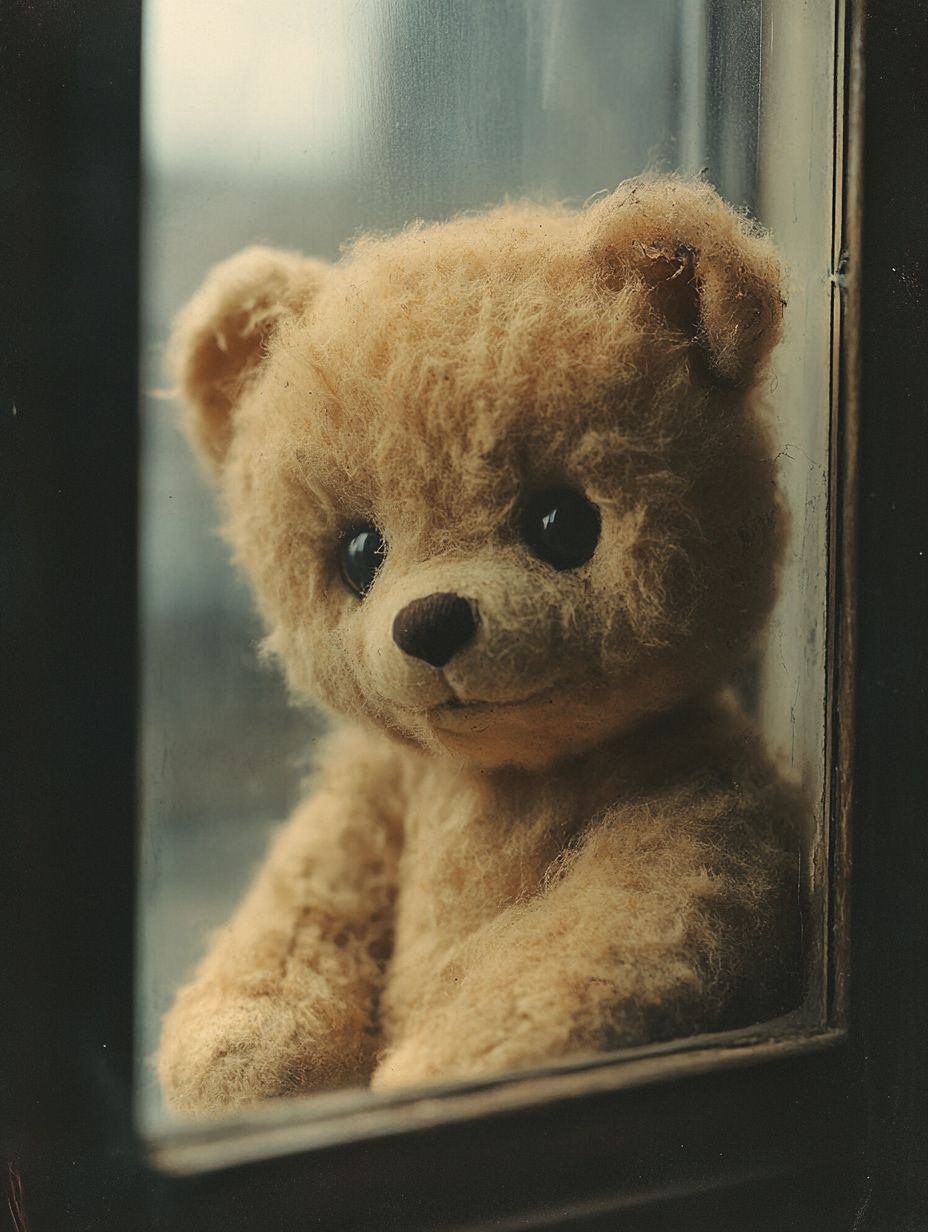
Age makes all the difference when it comes to teddy bear values. Those charming pre-war bears, especially from the Edwardian period, routinely fetch thousands at prestigious auctions, whilst their 1950s cousins might bring in rather less impressive sums.
Bears crafted before 1930 tend to be absolutely treasured by serious collectors – and rightfully so, given their historical significance.
The historical backdrop against which these furry friends were made adds another fascinating dimension to their worth. Take the Second World War bears, for instance – British manufacturers had to work absolute wonders with severely limited materials, making these pieces particularly special.
Merrythought bears from this era are especially prized; their early creations can spark quite heated bidding wars at auction houses.
Mind you, proper documentation makes an enormous difference. Should you stumble upon a bear complete with its original receipt or period photographs, you've struck gold.
The likes of Christie's simply won't entertain antique bears without solid provenance these days. Whilst dating these old chaps can be rather tricky business, certain telltale signs – glass eyes, proper mohair fur, and traditional jointing – usually help narrow down the era.
Though one must say, even experts occasionally scratch their heads over particularly mysterious specimens.
Material Quality and Condition
When it comes to teddies, the materials and condition make all the difference in value. Mohair bears, crafted from that luxurious Angora goat wool, generally outshine their synthetic rivals at auction. Take a proper Merrythought mohair – you'd be looking at £500 or more if it's a good example.
Mind you, condition is absolutely crucial. Rather like sizing up a classic motor, you'll want to give the bear a thorough once-over – checking those paw pads haven't worn through, the joints still work properly, and the fur's still thick and lovely.
Bit of a shame really, but dodgy repairs or missing bits can slash the value by a whopping 70%. Amateur patch-ups are particularly troublesome.
The stuffing's terribly important too. Original wood wool or kapok is what you're after – miles better than modern polyester. Quality bears often have that distinctive excelsior filling, giving them that proper firmness whilst still being nicely poseable.
Though I must say, there's something rather charming about a slightly worn bear that's been well-loved, compared to those pristine specimens that have just gathered dust in someone's loft for decades.
Handmade Vs Mass-Produced Bears
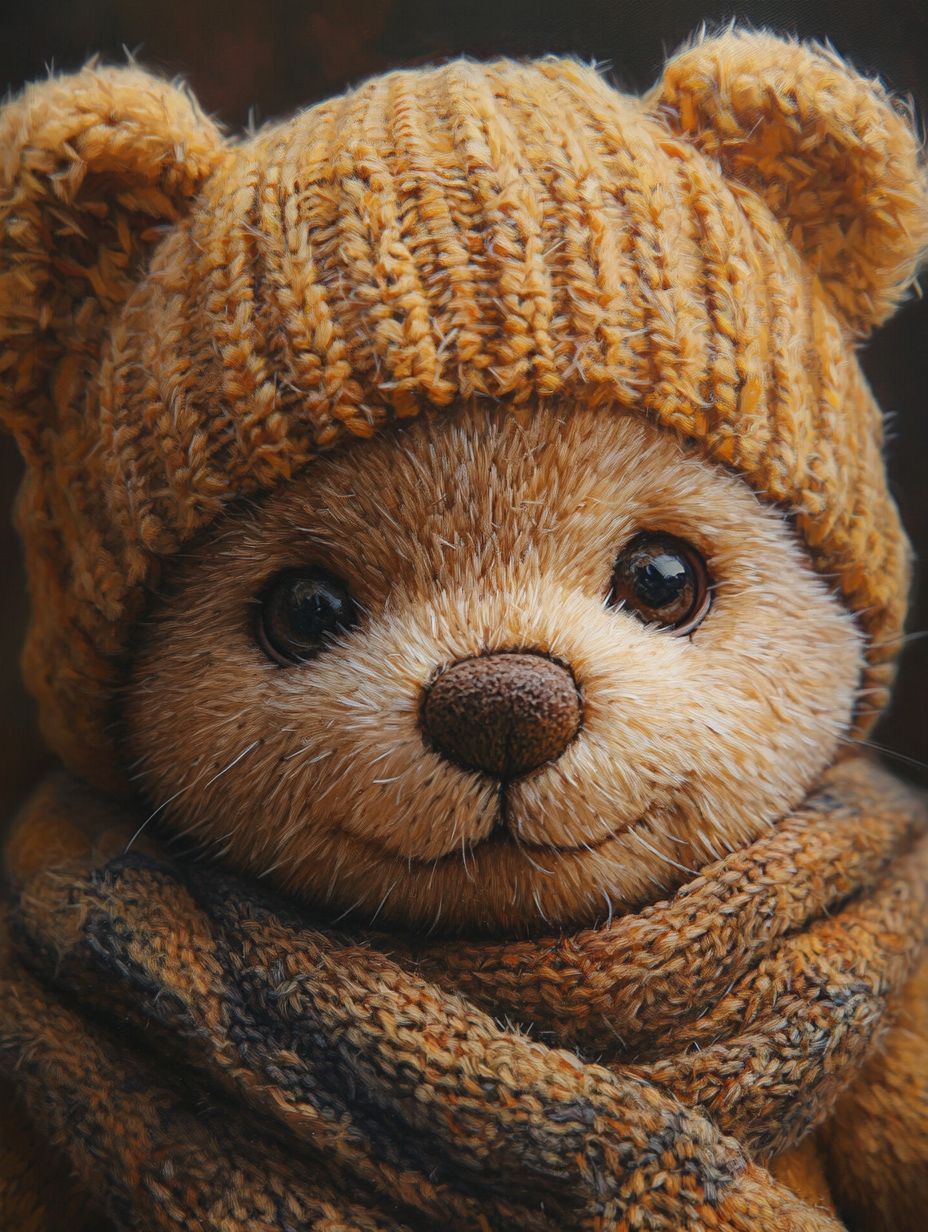
There's something rather special about handmade teddy bears that sets them worlds apart from their mass-produced cousins.
While you might pop into any high street shop and pick up a factory-made bear for £15-30, these mass-produced teddies tend to feel a bit soulless – rather like seeing rows of identical faces staring back at you.
The real magic happens with handcrafted bears, though they'll certainly make more of a dent in your wallet at £150 or more.
But crikey, what craftsmanship! Each one comes alive with its own personality, from the carefully hand-stitched nose right down to the precisely matched fabric on those tiny paw pads.
Most collectible ones even arrive with proper papers – certificates of authenticity and limited edition numbers that make them proper investments.
The devil's in the details, as they say.
Take the mohair or alpaca fabric – on a handmade bear, you'll notice how meticulously it's been cut to follow the natural direction of the fur.
Mass-produced bears simply can't compete with this level of attention; their machine-stitched seams and standardised patterns might be perfectly neat, but they rather miss the point of what makes a teddy truly special.
Mind you, both types have their place – it just depends on whether you're after a cuddle companion or a genuine collector's piece.
Rarity and Limited Editions
Rarity makes all the difference when it comes to teddy bear collecting, and limited editions tend to fetch rather eye-watering sums these days.
The real gems are those produced in seriously small numbers – we're talking fewer than 1,000 worldwide, mind you. Steiff, bless them, occasionally release tiny batches of just 50 bears, and they'll set you back a good £5,000 if you're lucky enough to find one.
Mind you, it's not purely about the numbers game. The truly special pieces often mark momentous occasions or royal celebrations – just look at those lovely Diamond Jubilee bears from 2012, which have absolutely soared in value.
Proper authentication is crucial, though. You'll want the full works: certificates, numbered tags, and those little special touches that set these bears apart from their everyday cousins.
Some of the most sought-after pieces come from manufacturers who've long since disappeared, particularly the pre-war Dean's Rag Book Company bears.
But don't be taken in by those cheeky so-called "limited editions" of 10,000 or more – they're really not worth getting excited about, investment-wise.
Original Tags and Documentation

Let's talk about those little bits of paper that make all the difference – the original tags and documentation that come with your teddy bears.
I'm always amazed at how something as simple as a manufacturer's label, especially from the likes of Steiff or Merrythought, can send a bear's value through the roof. Those tiny fabric tags might look insignificant, but they're absolute gold dust to serious collectors, often adding hundreds of quid to the price.
Mind you, it's the paperwork that really matters when you're dealing with special editions. Certificates of authenticity, old receipts, and all those bits of documentation tell the tale of where your bear's been and what makes it special.
Take a 1985 Steiff limited edition – with its papers intact, you might see it fetch £1,500 at auction. Without them? You'd be lucky to get half that. Rather sobering, isn't it?
Best keep all these precious papers somewhere safe and dry – a basic Manila folder tucked away from damp should do nicely.
And whatever temptation might arise, never snip off those hanging tags. They might look a touch scruffy dangling there, but to collectors, they're practically worth their weight in sovereigns.
Artistic Details and Features
When it comes to collectible teddy bears, those little artistic touches really do make all the difference. The facial features are particularly telling – have a good look at the nose and mouth embroidery, as these often reveal whether you're dealing with a proper handcrafted bear or a mass-produced one.
The finest specimens tend to show lovely hand-stitched details worked in silk or cotton thread, whilst factory-made bears typically feature rather uniform machine stitching.
What makes a bear truly special? Well, there's quite a bit to consider. Those glass or boot-button eyes should be just the right size and properly secured – vintage ones often have this rather splendid amber or deep brown colour about them.
The paw pads are rather fascinating too. Earlier bears typically sport felt pads, whilst later ones moved to velveteen, but what you're really after is that precise stitching around the edges.
Mind you, the joints are absolutely crucial. A proper traditional disk-jointed bear should move quite smoothly, though you'd expect to see some honest wear and tear on the older ones.
Rather charming, actually.
Perhaps most important is the quality of the mohair or plush fabric. The finest bears have this wonderfully dense, directional pile that's been carefully groomed to give real depth and character.
When you handle them, the fur should fall quite naturally, with these lovely subtle variations in colour and texture that catch the light beautifully.
Quite remarkable when you find a properly preserved example.
Size and Proportions
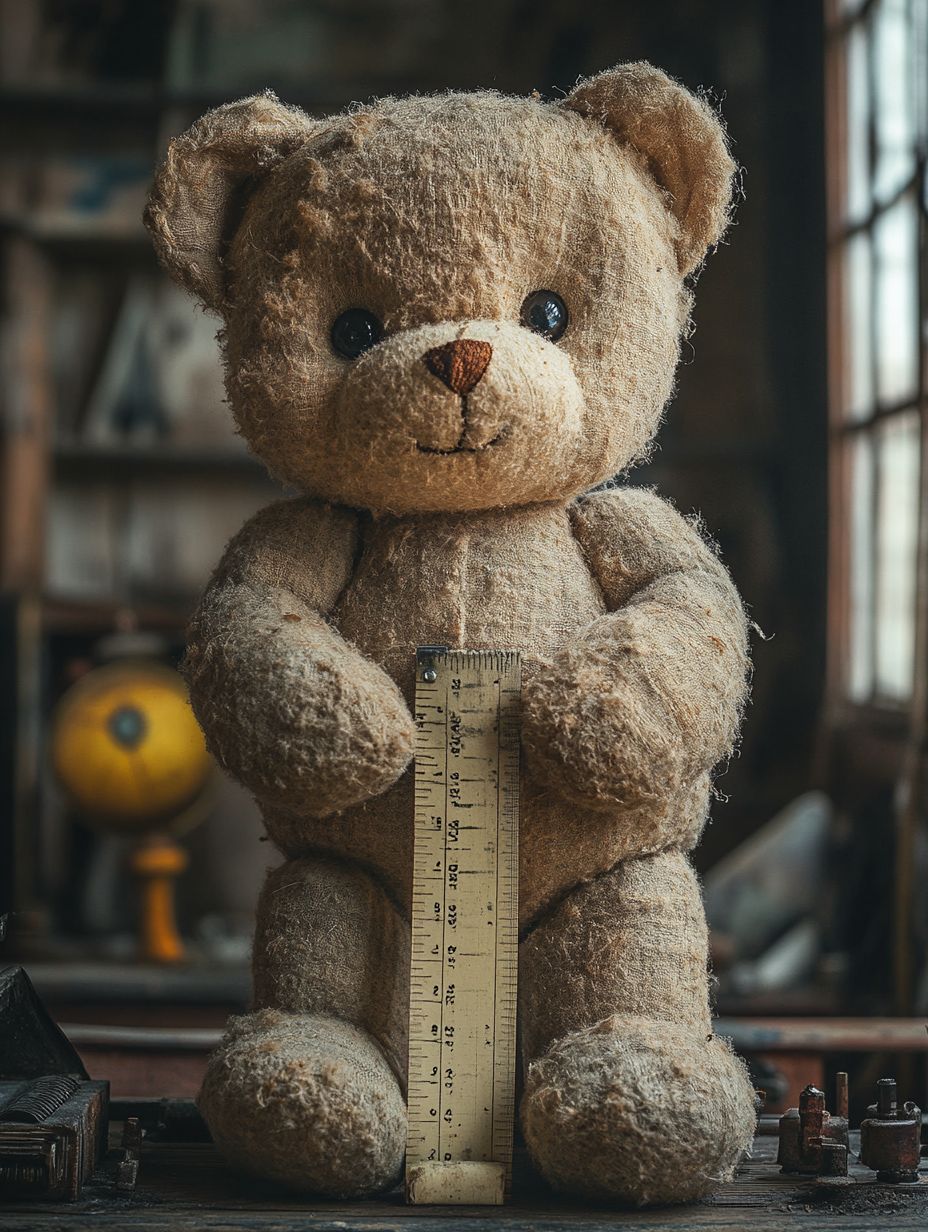
Size and proportions reveal fascinating clues about a teddy bear's heritage. The pre-1950s chaps tend to measure between 30 and 60 centimetres, sporting those characteristically long limbs and that rather lovely slouched posture collectors fancy.
Mind you, that distinctive hump on the body is a dead giveaway – modern manufacturers rarely seem to get it quite right.
The head-to-body ratio is particularly telling. Those splendid old bears from the likes of Steiff and Merrythought typically feature smaller heads, roughly a third the size of the body, lending them that quintessentially vintage charm.
It's quite different from today's mass-produced bears, which seem rather cartoonish with their oversized noggins and stubby limbs. Vintage bears often boast longer muzzles too – proper bear-like features, rather than the cutesy styling we see nowadays.
For serious collectors and investors, bears around 35 to 45 centimetres tend to command the highest prices at auction.
They're rather perfect really – not so massive they'll dominate your display cabinet, yet substantial enough to showcase all those marvellous period details that make vintage bears so special.
Restoration and Repairs
Restoring a cherished vintage teddy bear can be rather tricky business. Whilst most old bears need a bit of TLC at some point, you'd be wise to think twice before diving into repairs.
Even the smallest tweaks could seriously affect your bear's worth – that £500 collectible might end up as nothing more than a lovely ornament if handled poorly. The folk at the National Teddy Bear Museum in Dorset quite rightly suggest having a word with an expert before attempting any restoration.
There's quite a lot to mull over before committing to repairs. Modern materials might seem a sensible choice, but they'll knock the authenticity straight out of your vintage bear.
Professional restoration doesn't come cheap either – specialist work typically costs upwards of £75 per hour. Sometimes you've got to be brutally honest about whether it's worth spending £200 on repairs for a bear that might fetch £300 on a good day.
Should you fancy tackling the basics yourself, stick to gentle surface cleaning and securing loose stitches.
Anything more complicated – replacing joints, sorting out tatty mohair, or rebuilding worn paw pads – really ought to be left to the professionals.
Rather interestingly, collectors often prefer (and pay more for) bears showing honest signs of age and love rather than those that have been overzealously spruced up to look brand new.
Storage and Preservation Methods
Looking after vintage teddy bears properly is absolutely crucial if you want them to hold their value. I've found that wrapping bears in acid-free tissue or popping them in unbleached cotton bags works brilliantly – just make sure they're well away from sunlight, which plays absolute havoc with mohair and plush.
The sweet spot for storage is a climate-controlled cupboard keeping steady at 18-21°C with about 45-55% humidity.
Whatever you do, don't fall into the trap of using plastic bags for storage. They're dreadful things that trap moisture, and before you know it, you might spot mould creeping in – definitely not what you want for cherished bears.
Instead, grab some proper archival boxes with decent airflow. If you've got a few bears sharing space, try tucking lavender sachets between them to keep moths at bay, though mind you don't let the sachets touch the bears directly.
For those really special pieces – particularly the ones worth north of £500 – it's worth considering a proper display case with UV-protective glass.
Mind you, even with the best storage, you'll want to give your collection a once-over every few months. I tend to check mine quarterly, keeping an eye out for any unwelcome visitors or wear and tear.
A gentle going-over with a soft clothes brush helps keep the dust at bay. Better to stay on top of things than face a whopping great restoration bill down the line.
Conclusion
Right then – you should now feel rather more confident sorting the genuine treasures from the commonplace when dabbling in teddy bear collecting. While those Victorian beauties might catch your eye, or perhaps the latest limited editions from prestigious makers, do keep in mind that proper paperwork, pristine condition and a well-documented history are absolutely essential. Mind you, there's no cast-iron guarantee your furry friends will make you a fortune at Christie's, but if you look after them properly, they'll hold their worth – both in pounds and pence and in precious memories – for generations to come. Best to trust your gut whilst doing thorough research, rather than rushing in blind.

